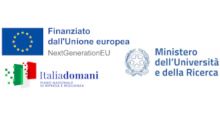
The study proposed concerns a novel method, called NDSA (Normalized Differential Spectral Attenuation), for the measurement of
the tropospheric Water Vapour (WV). The NDSA derives the Integrated Water Vapour (IWV) along a given microwave link from
differential normalized attenuation measurements made in the 17-21 GHz frequency range.
Theoretical studies sponsored by ESA (European Space Agency) demonstrated that the NDSA method is effective in providing
estimates of the IWV along the path between two Low Earth Orbit (LEO) satellites-one carrying a transmitter and the other a
receiver-in a limb geometry.
Two recent scientific projects, one funded by Regione Toscana in 2018-1019 (SWAMM), and one funded by the Italian Space Agency
(ASI) in 2020-2021 (SATCROSS) have been fundamental for the development of the NDSA technique: SWAMM allowed the realization
of the first low-cost instrument at 19 GHz, able to provide NDSA measurements along terrestrial links, while SATCROSS contributed
to demonstrate the feasibility of a future space mission. Laboratory tests with the upgraded instrument and two measurement
campaigns demonstrated the technical feasibility of the NDSA measurement approach.
A fundamental step to consolidate the progresses made and proceed further towards the realization of a space measurement project
based on the NDSA approach is the performance analysis of the IWV estimates provided by the prototype instruments, which must
necessarily include the validation of such estimates through comparison with those provided by other sensors and techniques. For
this reason, this proposal aims at the realization of new measurement campaigns in ground-to-ground configurations and designed
for an inter-comparison with the MAX-DOAS (Multi Axis Differential Optical Absorption Spectroscopy). The MAX-DOAS technique
allows the retrieval of the IWV in the visible spectral range at about 445 nm. This is an independent optical device, already available
at the CNR, which will be set up to observe the same air volume as the NDSA prototype instrument. In addition to the MAX-DOAS,
also measurements from radiosondes, hygrometers and satellite-derived humidity products (e.g., ERA-5, MODIS, etc.) will be
acquired and processed for an overall validation of the NDSA instrument prototype. The main campaign will involve the San Pietro
Capofiume station of the World Meteorological Organization (WMO) and the Monte Cimone CNR station. Another campaign is planned
with a link between at constant high altitude (e.g., connecting two mountain peaks), in order to reproduce as close as possible the
NDSA satellite measurement in troposphere.
